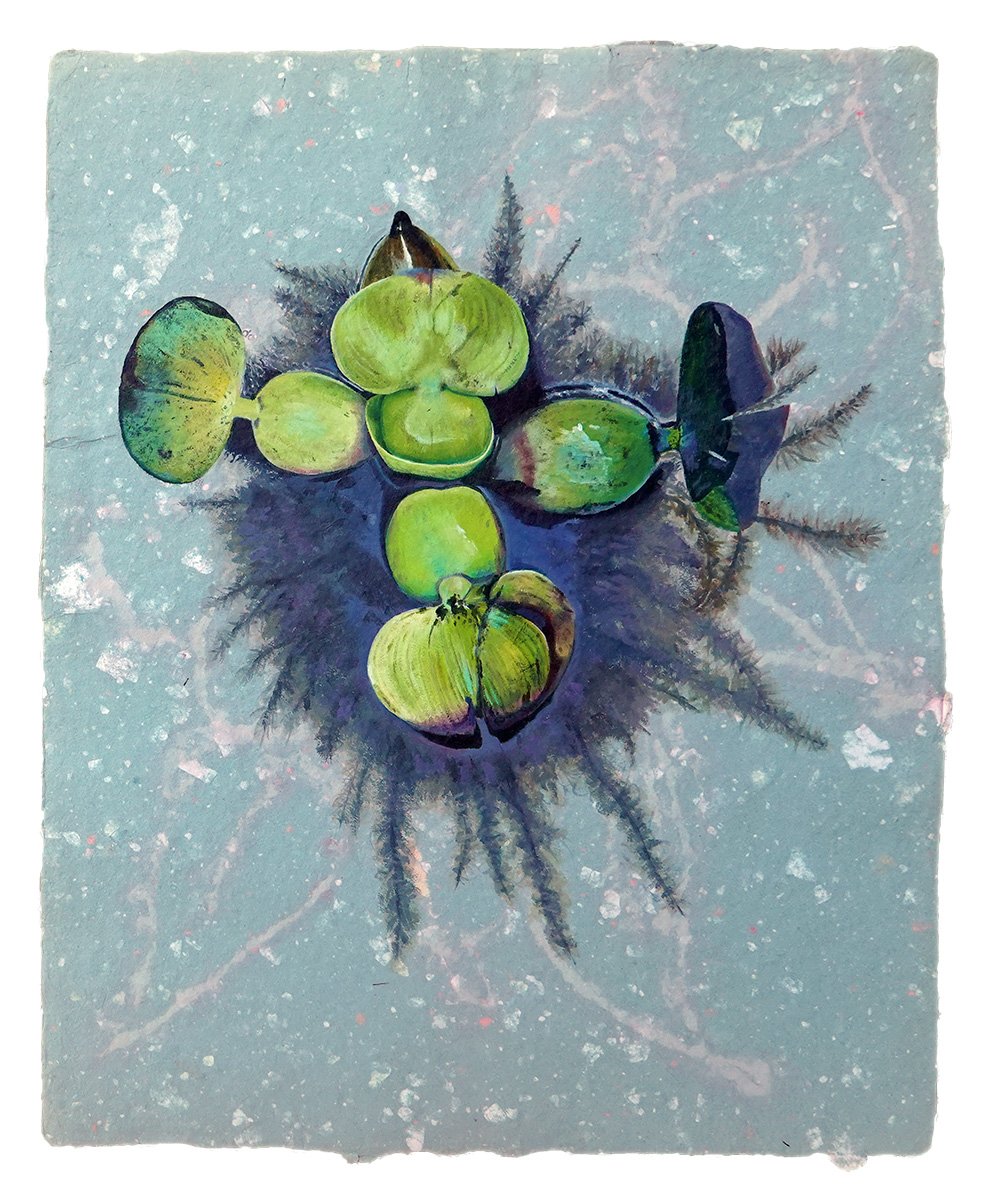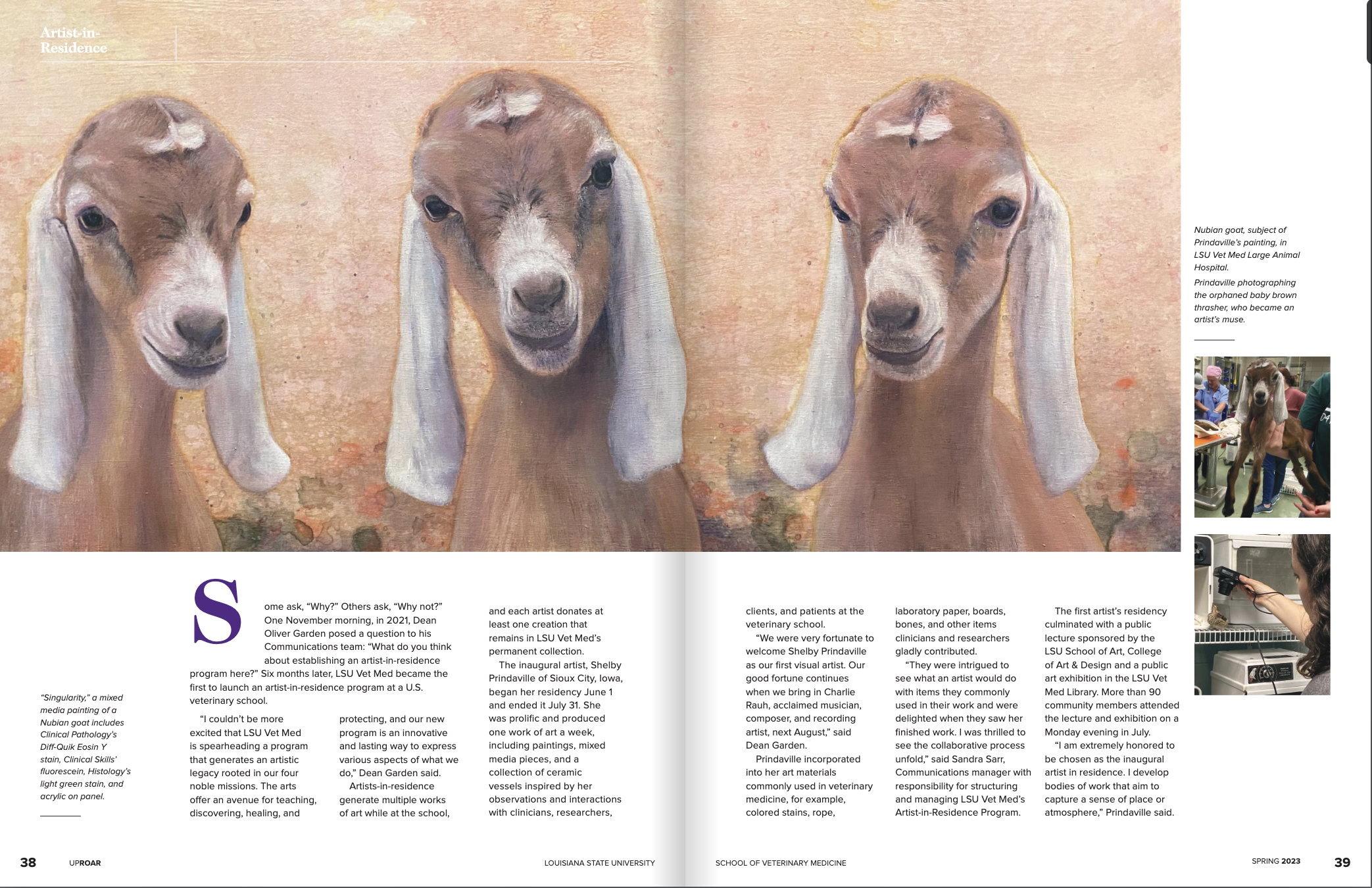I always aim to capture a sense of place or atmosphere in my residencies, and in this artist residency at the LSU School of Veterinary Medicine I have decided to incorporate medicines, pathology and histology stains, as well as veterinary chemicals, tools, and resources into each of my pieces as art media. (I have no idea how archival some will be - particularly how lightfast and stable the pigmentation of the medicines, stains, and chemicals is - but the evolution of how the artworks age will be interesting to witness and document, too!)
As you may already know, I work on multiple pieces of artwork simultaneously, so the first piece I start isn’t always the first to finish. This piece is actually the second one I began! It is of a Mississippi kite which is a beautiful raptor, and there were three here upon my arrival - two wild kites and one that has been habituated as an ambassador or resident raptor. The depicted wild bird is in a defensive stress posture, trying to look as big as possible so as to protect itself from predators.
This artwork incorporates ZooMed's PVP Prep Solution: povidone-iodine 10% topical antiseptic (also known as Betadine) and Integrative Medicine's AcuZone smokeless moxa-rolls for both the background and feet. There’s also a bit of the Betadine on the eyes over a base of acrylic.
I have titled this piece Fortification, and it is a mixed media painting including the aforementioned veterinary materials as well as acrylic and cornstarch on basswood panel, 20x20x1.5”, 2022.









